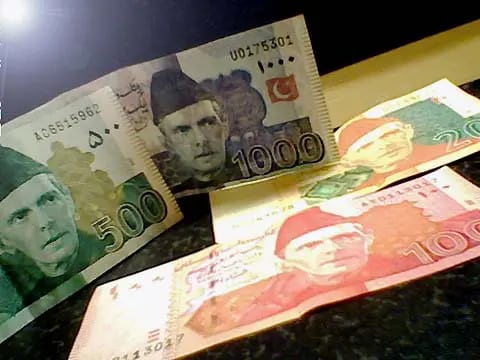The Pakistani rupee (PKR) is more than just a currency. It is a reflection of Pakistan’s economy, its people, and its place in the global financial system. Over the years, the rupee has faced fluctuations that have impacted everything from international trade to the everyday lives of Pakistani citizens.
This article dives into the history, challenges, and significance of the Pakistani rupee. You’ll learn what influences its value, its role in the economy, and how its performance impacts everyday transactions. Whether you’re looking to send money to Pakistan, explore foreign exchange markets, or simply understand more about the country’s economy, this guide provides straightforward, insightful answers.
What is the Pakistani Rupee?
A Brief History
The Pakistani rupee was introduced in 1947, following Pakistan’s independence. Initially pegged to the British pound, the currency underwent significant changes, including the shift from a pound-based system to reliance on the US dollar for exchange benchmarks. Over time, this evolution highlighted the growing importance of the rupee as Pakistan’s primary instrument of economic exchange.
The State Bank of Pakistan oversees the issuance and regulation of the currency, ensuring its stability and circulation. Each note and coin is a symbol of Pakistan’s cultural heritage—from depictions of historical landmarks to prominent national leaders.
The Role of the Rupee in Pakistan’s Economy
The rupee represents Pakistan’s economic heartbeat. It is used for everything from small transactions at local shops to multi-million-dollar international trades. Its value is a barometer of the country’s financial health. Strength in the rupee boosts consumer and investor confidence, but its depreciation can lead to inflation and reduced purchasing power, affecting businesses and households alike.
Factors That Influence the Value of the Pakistani Rupee
Several factors dictate the ups and downs of the rupee’s value in global and domestic markets. Understanding these can offer clarity in how the currency operates and why its value fluctuates.
1. Supply and Demand
The rupee’s value is determined, in part, by how much demand there is for it in financial markets. For example, when Pakistani products (like textile exports) are in high demand globally, international buyers purchase PKR to pay for these exports, strengthening the rupee. Conversely, when imports exceed exports, demand for foreign currencies increases, and the rupee’s value weakens.
2. Inflation and Interest Rates
Higher inflation weakens the currency because it reduces purchasing power. Conversely, higher interest rates can attract foreign investors seeking better returns on their investments, increasing demand for the PKR.
3. Foreign Debt and Remittances
High levels of foreign debt can lead to devaluation, as repayments are often made in stronger currencies like the US dollar. On the other hand, remittances sent by Pakistanis living abroad bolster the rupee, providing a steady inflow of foreign exchange reserves.
4. Political and Economic Stability
A stable political climate fosters investor confidence, often leading to a stronger currency. Economic challenges, such as increasing fiscal deficits or uncertainty in governance, can weaken the rupee.
Why the Pakistani Rupee Matters Internationally
The impact of the Pakistani rupee reaches far beyond its borders, influencing international trade, investment, and remittance flows.
1. Trade Relations
Pakistan’s imports (like oil and machinery) and exports (primarily textiles, rice, and other agricultural products) are directly impacted by the rupee’s exchange rate. A weaker rupee increases the cost of imports, while a stronger rupee makes exports less competitive globally.
2. Remittances
Pakistan is one of the largest recipients of remittances in the world. Millions of Pakistanis working abroad send money back home, accounting for a significant percentage of the country’s GDP. A stable or appreciating rupee ensures recipients get the most value from each remittance transaction, especially when converting foreign currencies to PKR.
3. Tourism
A devalued rupee can make Pakistan an attractive destination for international travelers by reducing their costs. This influx of tourism boosts local businesses and injects foreign currency into the economy.
Everyday Impact of the Rupee’s Value
The rupee’s value influences much more than just international transactions. Its fluctuations affect prices, savings, and investment opportunities across Pakistan.
1. Cost of Living
A devalued rupee typically leads to higher import costs, driving up the prices of essentials like fuel, food, and medicines. This can strain household budgets and make it harder to save.
2. Savings and Investment
Savings accounts and fixed deposits see their real value diminish if inflation outpaces interest rates. On the other hand, a stable rupee encourages investment in long-term financial instruments, stocks, and real estate.
3. Business Operations
For businesses reliant on imported machinery or materials, a weaker rupee increases operational costs. Export-oriented businesses, however, may benefit from a devalued currency, enabling them to stay competitive in global markets.
Supporting a Stronger Future for the Rupee
The path to a more resilient Pakistani rupee rests on both individual and governmental efforts.
1. Boosting Exports and Reducing Imports
Strengthening manufacturing industries and promoting domestic products can help reduce dependence on imports, strengthening the value of the rupee.
2. Building Foreign Exchange Reserves
Encouraging investments from overseas and incentivizing remittance flows can fortify the rupee against external shocks.
3. Policy Reforms and Economic Stability
Transparent governance, reduced fiscal deficits, and sustainable economic policies can inspire both consumer and investor confidence. With strategic reforms, the rupee can remain resilient despite global challenges.
A Thoughtful Financial Approach
The Pakistani rupee is more than just currency; it reflects the strength of an entire nation’s economy and its future potential. For business professionals, travelers, and those sending money to loved ones in Pakistan, staying informed about the rupee’s performance can translate into smarter financial decisions.
If you’re looking to send money to Pakistan, ensuring you get the best exchange rate is essential. By staying informed and choosing reliable platforms, you can make every rupee count.

